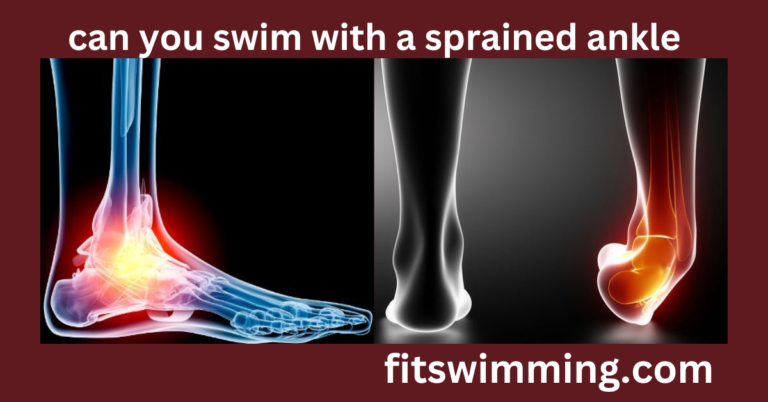Can You Swim with Hair Extensions Briefly Explained
Hair extensions are becoming popular because they can make your hair longer, thicker, and more flexible. They allow individuals to experiment with different styles and achieve their desired looks. However, for those who love swimming or enjoy spending time in the water, the question comes to mind can you swim with hair extensions?
Swimming with hair extensions can be a concern. It can affect aging and exposure to water, chlorine, salt water, and other elements. It’s essential to understand the various types of hair extensions and their compatibility with swimming activities to ensure the longevity and maintenance of your investment.
In this article, we will explore the different types of hair extensions commonly used, discuss factors to consider before swimming with hair extensions and provide guidance on how to care for them after swimming. We will share useful tips to protect your hair extensions while enjoying your time in the water.

Can You Swim with Hair Extensions
Yes, you can swim with hair extensions, but there are some important considerations to keep in mind. The ability to swim with hair extensions largely depends on the type of extensions you have and the level of care you provide.
Clip-in extensions
These are the most convenient type of extensions for swimming. You can easily remove them before entering the water to prevent damage from chlorine, saltwater, or excessive tugging. It is generally recommended to swim without clip-in extensions to ensure their longevity.
Tape-in extensions
Swimming with tape-in extensions is possible but requires some extra precautions. The adhesive used for tape-in extensions can be weakened by prolonged exposure to water or excessive moisture. To protect your tape-in extensions while swimming, consider wearing a swim cap and avoid submerging your head completely underwater for extended periods. After swimming, thoroughly dry the roots and bonds of the extensions to prevent any loosening.
Weave or sew-in extensions
Weave or sew-in extensions work by braiding your hair and sewing the extensions onto the braids. While swimming with weave or sew-in extensions is possible, It’s crucial to be extra careful. Ensure that your braids are secure and avoid excessive tugging or rough movements in the water. After swimming, thoroughly wash your hair extensions with clean water to remove any chlorine or saltwater. Proper drying is vital to prevent growth from making on the braids.
Fusion or pre-bonded extensions
Fusion or pre-bonded extensions are connected to your own hair using heat or glue. Swimming with fusion or pre-bonded extensions can be challenging as water and moisture can weaken the bonds. It is generally advised to avoid swimming with these types of extensions, especially if the bonds are newly applied. If you do choose to swim, protect the extensions with a swim cap and thoroughly dry them afterward to minimize any potential damage.
Hair Extensions for Swimming
Swimming is a beloved activity for many people, whether it’s at the beach, pool, or any other water destination. If you have hair extensions and you want to enjoy swimming without compromising their quality, there are a few things to consider.
Choose the Right Type of Hair Extensions
Not all types of hair extensions are suitable for swimming. Some extensions, like clip-ins and tape-ins, are easily removable and may be more convenient for swimming purposes. On the other hand, permanent extensions like sew-ins or fusion extensions need extra care and precautions.
Waterproof Extensions
If you’re planning to swim regularly, you may opt for waterproof hair extensions. These extensions are designed to withstand exposure to water, chlorine, and saltwater. They are typically made with synthetic fibers or special coatings that provide enhanced durability and water resistance.
Keep your hair extensions secure
Before swimming, double-check that your extensions are firmly attached. For clip-in extensions, ensure that each clip is properly fastened. If you have tape-in extensions, double-check that the adhesive is strong and firmly in place. Securing your extensions beforehand will help prevent any mishaps while swimming.
Protect Your Extensions from Chlorine and Saltwater
Chlorine and salt water can be harsh on natural hair and extensions. To protect your extensions, consider wearing a swim cap or using a protective spray specifically designed for hair extensions. These products act as a shield between your hair and the water, making it less likely for your hair to get damaged.
Rinse and Wash Thoroughly
After you swim, wash your hair and extensions with clean water to get rid of any chlorine, salt, or other chemicals. It’s important to wash your hair and extensions thoroughly to prevent buildup and potential damage. Use a mild shampoo and conditioner made especially for hair extensions.
Dry your extensions properly
- Don’t use too much heat from blow dryers or styling tools because it can harm your hair.
- After washing, softly pat your extensions with a towel to remove extra water, and then allow them to dry naturally in the air.
3. Allow your extensions to dry naturally after swimming.
Avoid Rough Activities
While swimming, be cautious of engaging in rough activities that may tug or pull on your extensions. Avoid excessive underwater movements, rough dives, or vigorous swimming strokes that could strain your extensions and potentially loosen them.
Regular Maintenance
You need to take care of your hair extensions properly so they can last a long time. Be gentle when brushing them using a wide-toothed comb or a brush made specifically for extensions. Avoid pulling or tugging at the roots, weakening the attachment points.
Can You Swim with Clip in Hair Extensions

While it is technically possible to swim with clip-in hair extensions, it is generally recommended to remove them before entering the water. Here are a few reasons
Damage Prevention
Clip-in extensions are not designed to withstand prolonged exposure to water, especially chlorine or saltwater. Chlorine and salt cause hair to become dry, brittle, and tangled. Additionally, the clips themselves may rust or deteriorate with repeated exposure to water.
Extension Longevity
Removing clip-in extensions before swimming helps preserve their quality and lifespan. By keeping them away from the damaging effects of water, chemicals, and friction, you can ensure that they maintain their natural appearance and last longer.
Convenience
Clip-in extensions are removable, taking them out before swimming makes the experience more convenient. You won’t have to worry about the extensions becoming tangled, weighed down, or uncomfortable while swimming. Removing them also reduces the risk of accidentally dislodging or losing them in the water. However, if you still choose to swim with clip-in extensions, here are a few tips to minimize potential damage
Securely fasten the clips
Ensure that the clips are securely attached to your natural hair before swimming to prevent them from coming loose in the water.
Protect from chlorine and saltwater
Before swimming, apply the protective spray to your natural hair and extensions. This can create a barrier that helps repel chlorine or salt water and reduces the risk of damage—moisture from causing tangling or mold. Gently pat them with a towel or let them air dry naturally.
Can You Swim with Tape in Hair Extensions
Yes, you can swim with tape-in hair extensions. Follow a few important things to consider and precautions to take. It is generally recommended to keep your hair extensions dry and avoid submerging them in water for extended periods. Chlorine and salt water can potentially weaken the adhesive used to attach the tape-in extensions, leading to them coming loose. It’s advisable to wear a swimming cap or secure your hair extensions to prevent excessive exposure to water. While telling you this, I advise you to know about swimming with a pacemaker.
FAQ’s
Yes, you can swim in chlorine with hair extensions, but it’s important to take precautions and properly care for your extensions before and after swimming to minimize damage.
When swimming with extensions, you can wear a swimming cap or secure your extensions to protect them from excessive water exposure. Additionally, rinsing your hair and extensions with clean water after swimming is important to remove chlorine or saltwater.
Hair extensions are generally safe to swim in, but precautions should be taken to prevent damage. It is important to keep the extensions as dry as possible, rinse them thoroughly after swimming, and follow proper maintenance and care guidelines to ensure their longevity.
Yes, you can swim with tie-in hair extensions. Tie-in hair extensions involve securing the extensions to your natural hair using small elastic bands. When swimming with tie-in extensions, it is important to be cautious and minimize water exposure to prevent potential damage.
Hair extensions themselves are not inherently waterproof. While some hair extensions may have certain water-resistant properties, such as special coatings or treatments, they are not completely impervious to water.







